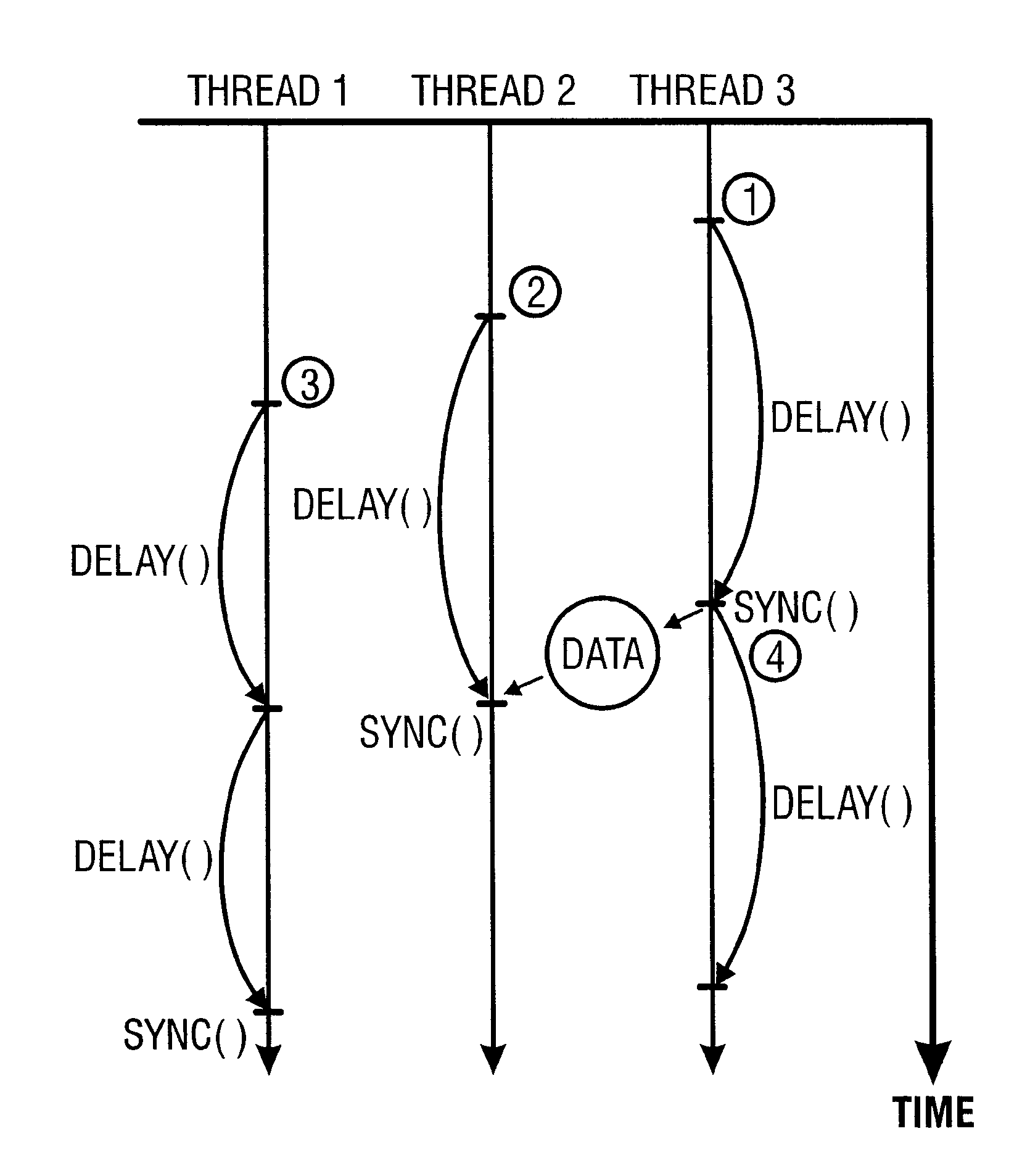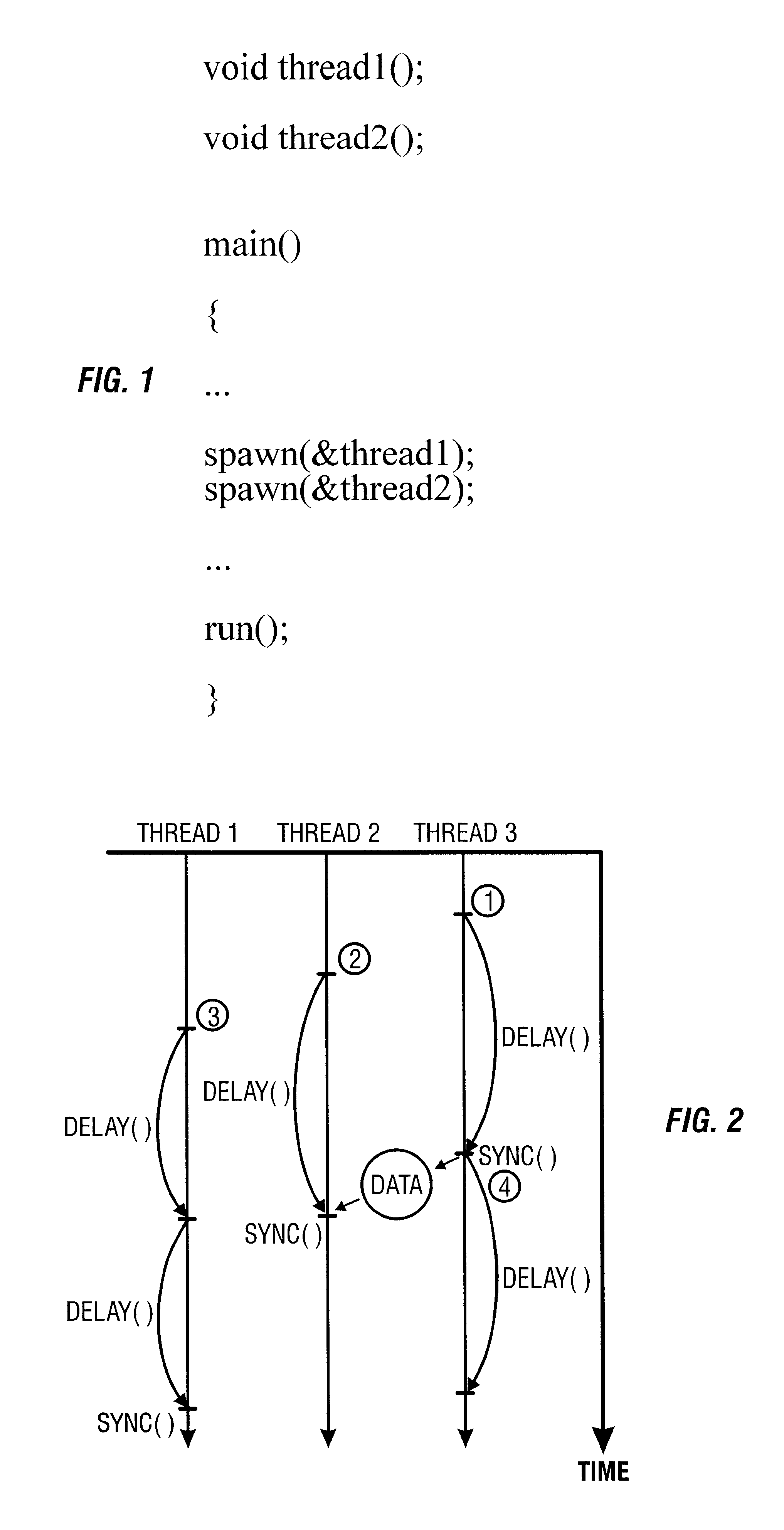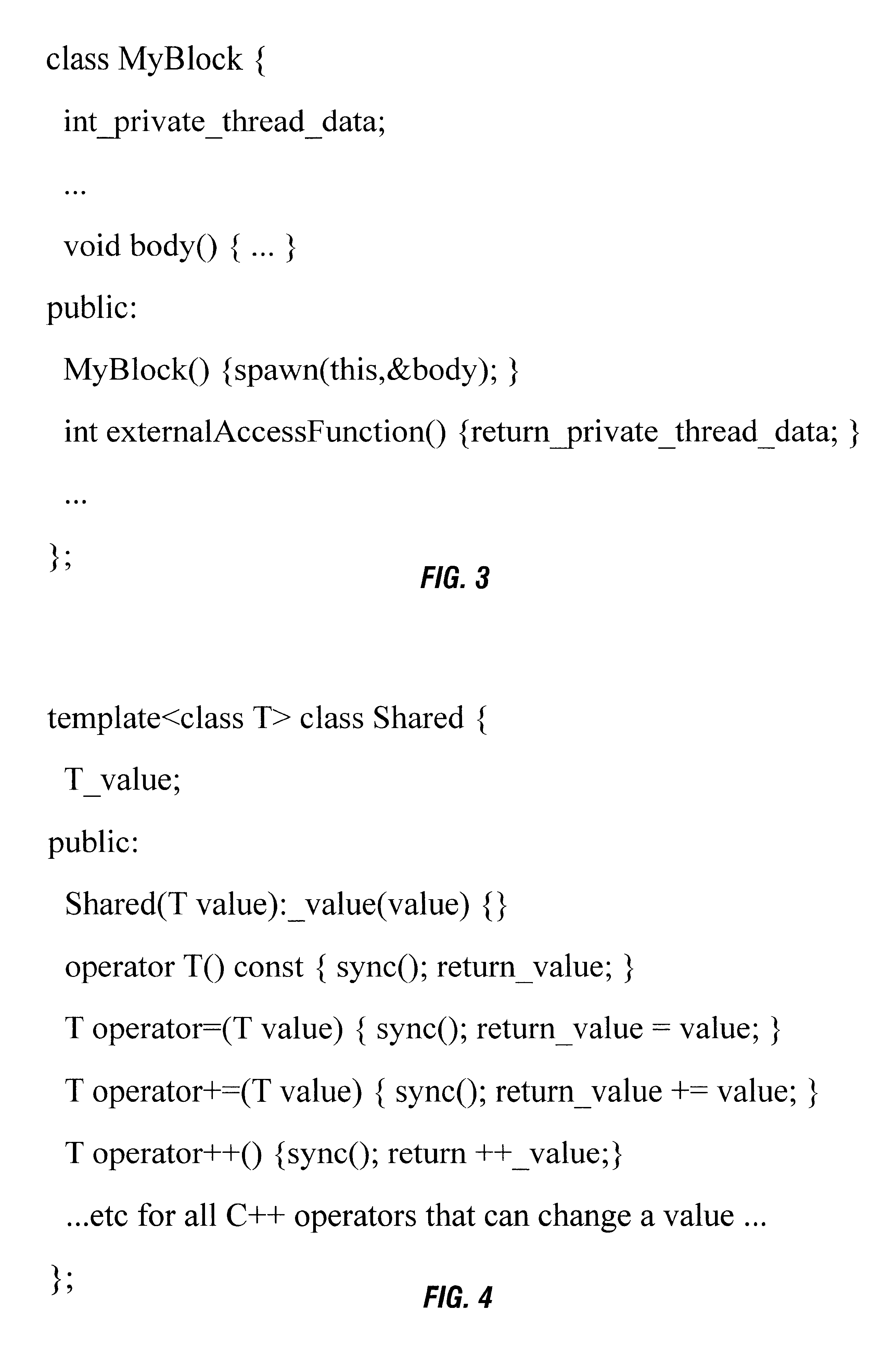Concurrent timed digital system design method and environment
a design method and digital system technology, applied in the direction of specific program execution arrangements, instruments, program control, etc., can solve the problems of low simulation efficiency, inability to provide a design methodology and design environment that meets all the above stated requirements, and cannot fully comply with a natural way of designing. , to achieve the effect of improving simulation efficiency, preventing unnecessary context switching, and improving simulation speed
- Summary
- Abstract
- Description
- Claims
- Application Information
AI Technical Summary
Benefits of technology
Problems solved by technology
Method used
Image
Examples
Embodiment Construction
[0060]The present invention will be described with reference to certain embodiments and to certain figures but the invention is not limited thereto but only by the claims. The terminology used is based on the proposals of the RASSP Taxonomy Working Group, see RASSP Taxonomy Working Group, RASSP VHDL Modeling Terminology and Taxonomy, revision 2.3, Jun. 23, 1998 http: / / www.atl.external.lmco.com / rassp / taxon / rassp_taxon.html. Behaviour is seen as the combination of functionality and architecture, and a purely functional model makes an abstraction of timing. A model that concentrates on timing aspects and makes abstraction of functionality is called a performance model. Both models can be very abstract or very detailed. Abstraction is the opposite of detail, resolution or precision, which can apply to timing as well as functionality or structure; an abstract model is not necessarily purely functional. Precision, the opposite of abstraction, is not a synonym for accuracy; a model can be ...
PUM
 Login to View More
Login to View More Abstract
Description
Claims
Application Information
 Login to View More
Login to View More - R&D
- Intellectual Property
- Life Sciences
- Materials
- Tech Scout
- Unparalleled Data Quality
- Higher Quality Content
- 60% Fewer Hallucinations
Browse by: Latest US Patents, China's latest patents, Technical Efficacy Thesaurus, Application Domain, Technology Topic, Popular Technical Reports.
© 2025 PatSnap. All rights reserved.Legal|Privacy policy|Modern Slavery Act Transparency Statement|Sitemap|About US| Contact US: help@patsnap.com



